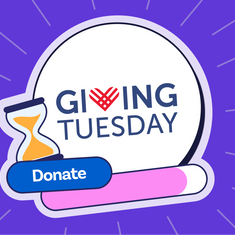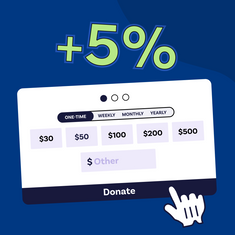
Are you curious about community-centric fundraising and how it might work for your organisation? Learn more about the principles of this model.
Run a nonprofit? You’ll know that every organisation has a mission to change the world by uniting your team with your donors for a specific purpose. But what about how we run our nonprofit? Well until recently, nonprofit culture and strategic decision-making has been a one-way street.
Depending on your situation, that might be an issue. Donors may differ from the communities they serve about which approaches they believe are most appropriate or effective. It’s easy for good intentions, opinions, and personal interests to overlook cultural values and lived realities of those on the ground in marginalised communities.
It used to be that community leaders needed to accept assistance without much say in how or when services are delivered. But things are changing — for the better — and a new way of fundraising is emerging in leading nonprofits.
That new way? It’s called community-centric fundraising, or CCF for short. And it’s how nonprofits grapple with power dynamics formed over time. Taking a progressive stance like this isn’t easy! If you do choose to embrace CCF principles, you’ll likely have some difficult but worthwhile conversations.
However, with dedication and practice, you’ll also uncover new opportunities to engage the communities you serve with equity and dignity. You’ll start to form more authentic relationships within and between communities to create effective change.
In this article, you’ll learn about why CCF was developed, how it differs from traditional donor-centric fundraising, why you might decide to adopt CCF principles, and how you can make your next Raisely campaign more community-centric.
What Is Community-Centric Fundraising?
The idea behind CCF first came about in 2015 when nonprofit thought-leader Vu Le published articles critiquing donor centrism. Le’s articles started a conversation among Seattle-area executive directors and fundraisers of colour, and a diverse group of leaders eventually developed the movement into a sponsored entity. Today, CCF is a philosophy and a set of principles that any nonprofit organisation can adopt and practise as part of the larger community-centric fundraising movement.
For fundraising professionals and others in the nonprofit space, the main goal of CCF is to question dominant fundraising philosophies and explore new practices that reduce harm while promoting social justice. CCF as an entity has developed 10 Principles of Community-Centric Fundraising, which are continuously revised as the conversation unfolds.
The first three principles of CCF summarise the major aims:
- Fundraising must be grounded in race, equity, and social justice.
- Individual organisational missions aren’t as important as the collective community.
- Nonprofits are generous with and mutually supportive of one another.
CCF isn’t meant to be a one-size-fits-all model; individual organisations are encouraged to adapt these principles and make them their own.
What Other Fundraising Models Exist?
Researcher Penelope Burk coined the term “donor-centred fundraising” in her 2003 book of the same name. Focused on reducing donor attrition, this model prioritises donors much like a traditional business runs on the idea that “the customer is always right.” The nonprofit’s role is to mediate between donors and the community it serves, rather than opening up direct and honest dialogues between them. Donor-centred organisations risk skewing their communications and overall strategy toward donors’ interests at the expense of the community in need.
This model has ruled the nonprofit sector for so long because it creates strong relationships with donors that result in consistent funding streams. But problems can arise when different stakeholders have different opinions about how to use money and resources. Pleasing donors can easily take priority over the nonprofit’s service-oriented mission and its relationship with the community. To overcome this, you have to be willing to get a little uncomfortable.
What Are the Benefits of Community-Centric Fundraising?
This new approach provides a context for important conversations about race, inequity, and privilege among nonprofit communities, including fundraisers, donors, clients, and staff. Conversations like these can foster a deep sense of belonging for everyone involved, but they’ve been all-too-rare in donor-centric models. When they do happen, there’s little incentive to take action on changes that might disrupt the donors’ interests.
With community-centric principles as a source of guidance, you can engage with the diverse communities you serve on their terms and work together as equals to actively reduce harm while providing support.
Another benefit of CCF is the mindset of abundance and community among organisations, rather than the competition that prevails in a donor-centric model. When you recognise that your organisation is interdependent with others, it’s easier to find chances to work together and provide mutual support instead of competing for donors.
Why Practise Community-Centric Fundraising?
Inviting community members into conversations with your organisation’s leaders for the first time may bring up new challenges, and pushing back on donors can be nerve-wracking. But this work pays off when you remember that you’re confronting problems with donor-centrism. For example, including the people you serve instead of othering them, actually hearing their voices, and collaborating instead of competing.
When you value other kinds of resources and support besides financial donations, there’s opportunity for members of the community to get involved with your organisation’s work and invest in bettering their community in a dignified way. Someone who may not have money to contribute might be able to spend time volunteering. You can acknowledge the value of this in-kind gift by inviting them into decision-making conversations.
Case Study: Beyond Blue
Australian mental health organisation Beyond Blue experienced explosive growth by focusing on their community during the COVID-19 pandemic. Here’s what happened when they listened to feedback and took prompt action:
After seeing a 42% increase in calls, Beyond Blue quickly set up a matched giving End Of Financial Year (EOFY) appeal. It was their first matched giving campaign, totaling $877,000, which included $350,000 in matched giving. Beyond Blue was able to respond rapidly when demand for mental health support skyrocketed by focusing on community impact rather than appealing to donors’ generosity alone.
Tips for Practising Community-Centric Fundraising with Raisely
Embracing CCF principles means admitting that you’re not working in a vacuum, plus reaching out to engage everyone you can. It’s about connecting resources, perspectives, and ideas.
Try these tips to put community first with your next Raisely campaign:
1. Focus on Accessibility
Make it easy for everyone to participate in your campaign by creating materials that are accessible for individuals with diverse abilities. For example, use fonts and background colours with high contrast and add alt text to your images.
2. Encourage Fundraisers to Personalise Their Pages
When fundraisers are open about the reasons your cause is close to their heart, people listen. That’s why we love our peer-to-peer fundraising campaign framework. Encourage fundraisers to share their stories to create quality engagement with their communities.
3. Practise Two-Way Communication
It’s important to be a resource to your fundraisers, but remember to listen to them and ask them for ideas too. Share the best ones on your website or in other marketing materials to inspire your entire community.
4. Recognise Fundraisers’ Hard Work and Put Them in the Spotlight
When you hear from fundraisers doing outstanding work, share the good news on social media and in newsletters, annual reports, and internal channels. Set up trigger-based messages to keep the praise flowing as fundraisers progress toward their goals.
5. Always Connect Them to the Cause When Your Team Communicates With Fundraisers
Show fundraisers you value their part in a collective movement for something greater than themselves. Thank them often, remind them of the purpose you share, and acknowledge their indispensable role in creating change to make your team of fundraisers feel rewarded.
Shift Your Focus to Emphasise Community
Are you feeling inspired to get in touch with your community and change the conversation? Make your fundraisers an integral part of your campaign by creating a peer-to-peer fundraising campaign on Raisely. All you need is a free Raisely account to set your first fundraising goal and start recruiting fundraisers to support your cause.
Create your Raisely account today and start exploring more ways to engage in community-centric fundraising efforts.




